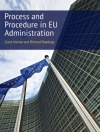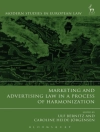Criminal Procedure and Punishment provides a holistic overview of the English and Welsh system of criminal justice, from the earliest stages of arrest and investigation through to the punishment and release of offenders. Aimed at students, it examines not only the law and procedure of criminal justice and punishment, but also underpinning theories and surrounding issues.
The book is designed as a primary text for modules on Law and Criminology undergraduate programmes, including those which cover criminal procedure, criminal law, criminal justice, penology and criminology.
The book is broadly divided into two linked parts. The first focuses on criminal procedures and practice, including: the influence of criminal justice theories and traditions; the use (and misuse) of police powers; police custody, confessions and the right to silence; the trial process and fundamental fair trial rights; appeals and sentencing; and miscarriages of justice. The second part focuses on punishment, including: discussion of its history in England and Wales; theoretical and philosophical arguments from scholars including Kant and Bentham; punishment in the modern era; and the prison crisis. This edition concludes with discussion of contemporary issues in criminal procedure and punishment.
Both parts link to common themes and issues, with connections drawn between the different stages of the process and their impact on each other. The book thus offers, through doctrinal and socio-legal methods, a contemporary and rounded approach to two constantly evolving and interwoven aspects of criminal justice.
New for this edition
- Updated context and information, expanded discussions, new cases and topical developments in areas covered in existing chapters, including reform of pre-charge bail; the explosion in the use of pre-trial detention by courts; and developments relating to special measures at trial. The book closes with a new chapter exploring two contemporary issues in criminal procedure: pre-charge engagement; and challenges in the investigation and prosecution of sexual offences.
Inhaltsverzeichnis
Chapter 1 Theoretical Approaches to Criminal Procedure
1.1 Introduction
1.2 An overview of legal traditions
1.2.1 Adversarialism
1.2.2 Inquisitorialism
1.2.3 A brief critique of ideological approaches to criminal justice
1.3 The purpose(s) of the criminal trial
1.3.1 Truth
1.3.2 Argument
1.3.3 Catharsis
1.3.4 Finality
1.4 Adversarial and inquisitorial trials: a different purpose?
1.5 The role of the judiciary in different legal traditions
1.5.1 The adversarial judiciary
1.5.2 The myth of the impartial adversarial umpire?
1.5.3 The inquisitorial judiciary
1.6 Critical analysis of criminal justice: Packer’s models
1.7 Conclusion
Chapter 2 Policing on the Street: Powers of Investigation
2.1 Introduction
2.2 The power to stop and search
2.2.1 Why is stop and search important?
2.2.2 The law governing stop and search
2.2.3 Racial discrimination
2.2.4 Reform
2.2.5 Other safeguards
2.2.6 Summary
2.3 The power of arrest
2.3.1 What constitutes an ‘arrest’?
2.3.2 The law governing arrest
2.3.3 Ancillary powers and duties
2.3.4 Research on the power of arrest
2.3.5 Summary
Chapter 3 In Police Custody: Powers to Detain and Interrogate
3.1 Introduction
3.2 History and development
3.3 Custody officers
3.3.1 Decisions about detention
3.3.2 Release from police custody on bail
3.3.3 The ‘necessity’ of detention prior to charge
3.3.4 The effect of the custody officer (CO)
3.4 Custody records
3.5 Reviews of detention
3.6 Detention time limits
3.7 Charging a suspect
3.7.1 The Full Code Test
3.7.2 The Threshold Test
3.7.3 Which test is used?
3.7.4 Who makes the decision to charge?
3.7.5 Research on charging decisions
3.8 The right of access to a lawyer
3.8.1 The right to a lawyer and human rights
3.8.2 The impact of s 58 on access to a lawyer
3.8.3 Who provides legal advice at police stations?
3.8.4 How is legal advice provided?
3.8.5 The effect of legal advice
3.9 Police interview
3.9.1 Why do the police interview?
3.9.2 Defining a police ‘interview’
3.9.3 When can the police interview?
3.9.4 Safeguards in police interviews
3.10 Summary
Chapter 4 The Right to Silence
4.1 Introduction
4.2 The origin of the right to silence
4.3 The scope of the right to silence
4.3.1 The ‘general’ immunities
4.3.2 The ‘specific’ immunities
4.4 The right to silence: advantages and disadvantages
4.4.1 Advantages
4.4.2 Disadvantages
4.4.3 Some counter-arguments
4.5 Using silence against the accused: the Criminal Justice and Public Order Act(CJPOA) 1994
4.5.1 Section 34
4.5.2 Section 35
4.5.3 Sections 36 and 37
4.6 The impact of reform on the right to silence
4.6.1 Use of silence and successful convictions
4.6.2 Complexity
4.6.3 Silence, disclosure and legal advice
4.6.4 The delegitimisation of silence
4.7 Summary
Chapter 5 The Regulation of Confessions
5.1 Introduction
5.2 What is a ‘confession’ and how is it regulated?
5.2.1 A confession needs to be made by the accused
5.2.2 The confession must be ‘adverse’ to the accused
5.2.3 A confession can be either partly or wholly adverse
5.2.4 It can be made to a person in authority or not
5.2.5 A confession can be made in words or otherwise
5.2.6 The regulation of confession evidence
5.3 False confessions
5.3.1 Coerced-internalised confessions
5.3.2 Coerced-compliant confessions
5.3.3 Coerced-passive confessions
5.4 Police-invented confessions
5.5 Prevalence and significance
5.6 Regulation of confession evidence in the police station
5.6.1 Legal advice
5.6.2 Oppression and inducements
5.6.3 Other safeguards
5.7 Regulation of confession evidence at trial: PACE 1984, s 76
5.7.1 Oppression
5.7.2 Unreliability
5.8 Procedure for excluding confession evidence
5.9 Summary
Chapter 6 ‘Managing’ Criminal Procedure
6.1 Introduction
6.2 The evolution of disclosure
6.3 The birth of the efficient criminal process: CPIA 1996
6.4 The Auld Review and evolution of the CPIA 1996
6.5 The Criminal Procedure Rules: a ‘sea change’ in managing criminal justice
6.5.1 Paragraph (a): ‘acquitting the innocent and convicting the guilty’
6.5.2 Paragraph (b): ‘dealing with the prosecution and the defence fairly’
6.5.3 Paragraph (c): ‘recognising the rights of a defendant, particularly those under Article 6 of the European Convention on Human Rights’
6.5.4 Paragraph (d): ‘respecting the interests of witnesses, victims and jurors and keeping them informed of the progress of the case’
6.5.5 Paragraph (e): ‘dealing with the case efficiently and expeditiously’
6.5.6 Paragraph (f): ‘ensuring that appropriate information is available to the court when bail and sentence are considered’
6.5.7 Paragraph (g): ‘dealing with the case in ways that take into account the gravity of the offence alleged, the complexity of what is in issue, the severity of the consequences for the defendant and others affected, and the needs of other cases’
6.6 Case management: the power to control the trial
6.7 Truth or proof: the dilution of adversarialism in pursuit of the overriding objective
6.8 Conclusion
Chapter 7 The Criminal Court (in Theory)
7.1 Introduction
7.2 Venue of trial and allocation of cases
7.2.1 Summary offences
7.2.2 Indictable offences
7.2.3 Either-way offences
7.3 Comparing magistrates’ courts and the Crown Court
7.4 The ‘actors’ in the criminal process
7.4.1 The judge
7.4.2 Lay magistrates
7.4.3 The prosecutor
7.4.4 The defence lawyer
7.4.5 The jury
7.5 Conclusion
Chapter 8 The Criminal Court (in Practice)
8.1 Introduction
8.2 Before court: bail and detention
8.3 First appearance at court
8.3.1 Guilty plea
8.3.2 The significance of early guilty pleas
8.3.3 Not guilty plea/no plea
8.4 Court bail
8.4.1 The grounds for withholding bail
8.4.2 Unconditional and conditional bail
8.4.3 How common is pre-trial detention?
8.4.4 Research on the use of pre-trial detention
8.5 Pre-trial disclosure
8.6 The trial
8.7 Sentencing
8.8 Summary
Chapter 9 Appeals
9.1 Introduction
9.2 The need for an appeals process
9.3 Appeals from a magistrates’ court
9.3.1 Appeals against conviction or sentence to the Crown Court
9.3.2 Appeals by way of case stated to the Divisional Court of the Queen’s Bench Division of the High Court
9.3.3 Judicial review
9.4 Appeals from the Crown Court
9.4.1 ‘Fit for appeal’
9.4.2 Prevalence
9.4.3 Unsafe convictions
9.4.4 Fresh evidence
9.4.5 Result of appeals from the Crown Court to the Court of Appeal
9.5 Appeals to the Supreme Court
9.6 The post-appellate system
9.6.1 The old system: the Home Secretary’s reference
9.6.2 The new system: the Criminal Cases Review Commission (CCRC)
9.7 Summary
Chapter 10 Theories of Punishment
10.1 Introduction
10.2 Why do we punish?
10.2.1 Retribution theory
10.2.2 Prevention theory
10.2.3 Denunciation
10.2.4 Reparation theory
10.3 Justifications in practice: sentencing
10.3.1 Sentencing
10.3.2 The death of discretion
10.4 Conclusion
Chapter 11 Punishment in Practice: Custody and the Alternatives
11.1 Introduction
11.2 Prison
11.2.1 Immediate incarceration: the aims and use of prison
11.3 Suspended sentences
11.4 Community sentences
11.5 Fines
11.5.1 How is a fine fixed?
11.5.2 Sanctions for non-payment
11.5.3 Equal fines: equal impact?
11.6 Discharge
11.7 Out of court disposals
11.7.1 Simple and conditional cautions
11.7.2 Penalty notices for disorder
11.8 Conclusion
Chapter 12 Miscarriages of Justice
12.1 Introduction
12.2 What is a miscarriage of justice?
12.3 A history of mistakes: how miscarriages have shaped criminal justice
12.4 Causes of miscarriages of justice
12.4.1 External pressures on the justice process
12.4.2 Prosecution misconduct
12.4.3 Police misconduct
12.4.4 Unreliable witnesses
12.4.5 Non-disclosure, faulty forensic evidence and inadequate investigation
12.4.6 Ineffective representation
12.5 Summary
Chapter 13 The Future of Criminal Procedure and Punishment
13.1 Introduction
13.2 Algorithms in police decision-making for out of court disposals
13.3 Disclosure: the need for urgent reform
13.4 Brain scanning: lie detectors
13.4.1 Brain-based lie detection
13.4.2 Implication: the privilege against self-incrimination
13.4.3 Implication: the right to silence
13.4.4 The rise of efficiency: the attraction of technology
13.4.5 Should brain scanning be permitted?
13.5 Body-worn video and street interviews
13.6 Online courts
13.7 The prison crisis
13.8 Conclusion
Über den Autor
Tom Smith is a Senior Lecturer in Law, specialising in criminal justice and procedure, criminal defence lawyers, legal aid, pre-trial detention and disclosure. He teaches Organised Crime and Criminal Justice, Criminal Procedure and Punishment, and Sexual Offences and Offending. He has worked on domestic and cross-jurisdictional research projects examining pre-trial detention, effective defence work, and reporting on criminal courts; acted as an expert consultant on pre-trial detention in China; and published a number of articles in a range of literature including the Criminal Law Review and the International Journal of the Legal Profession.












